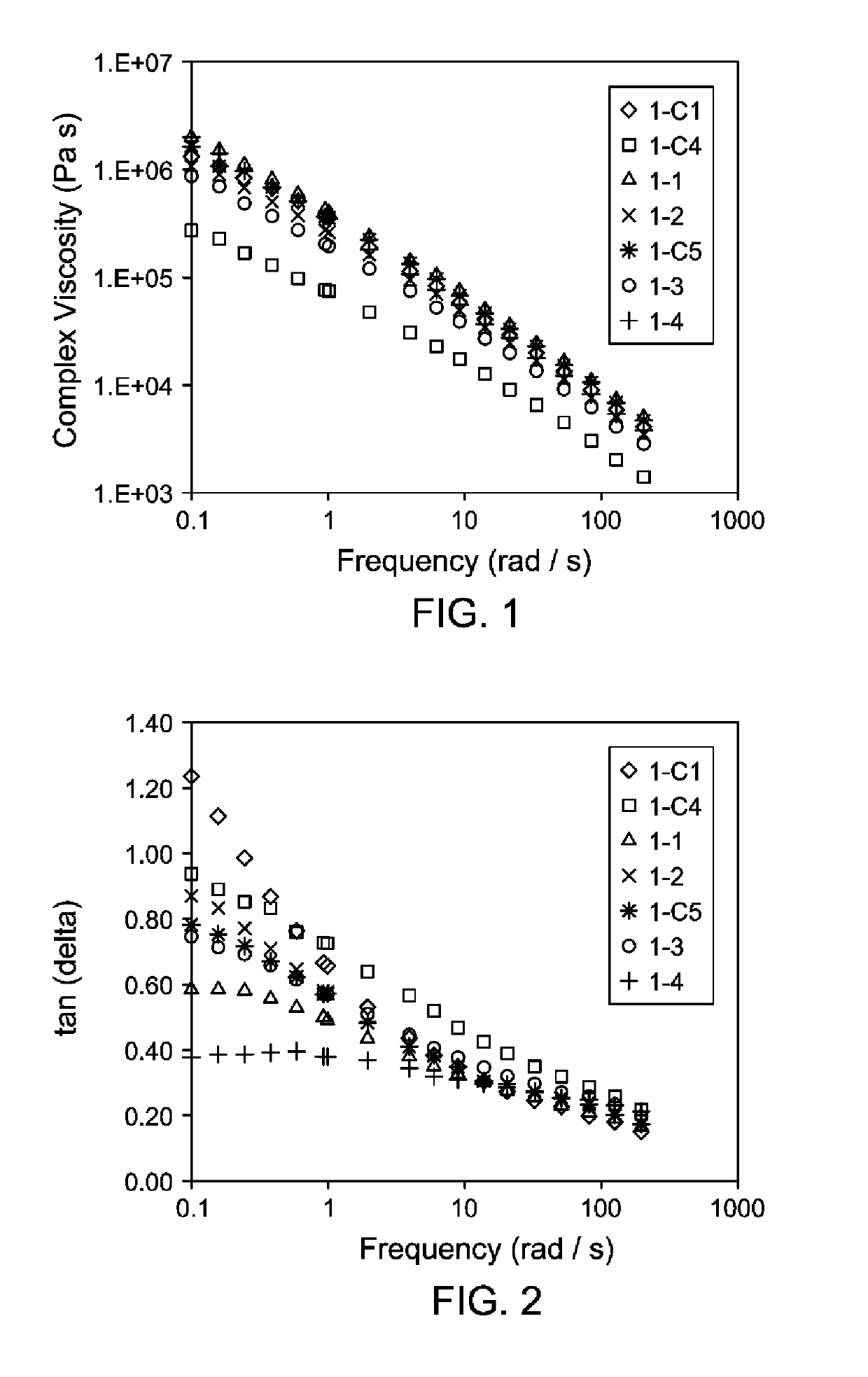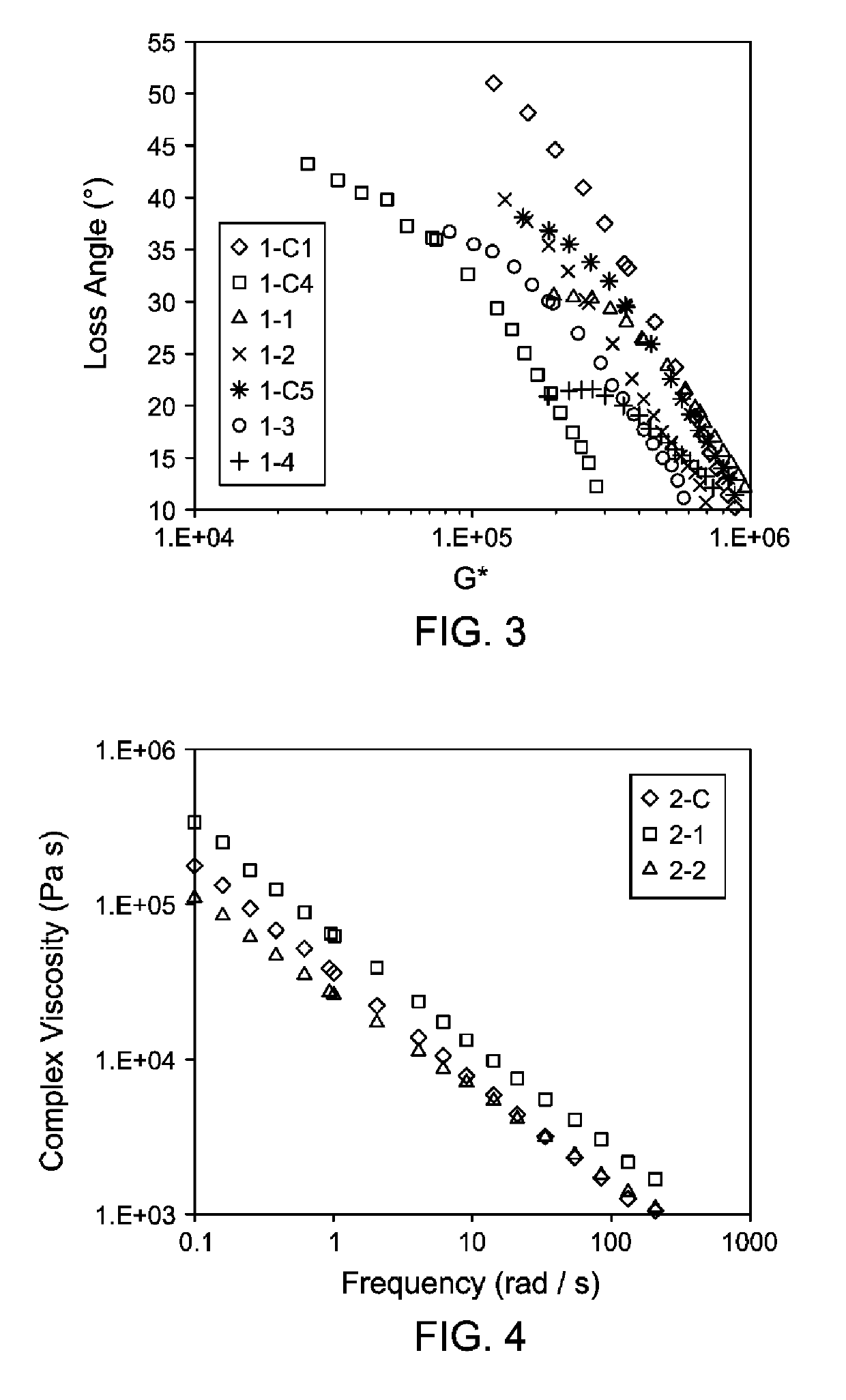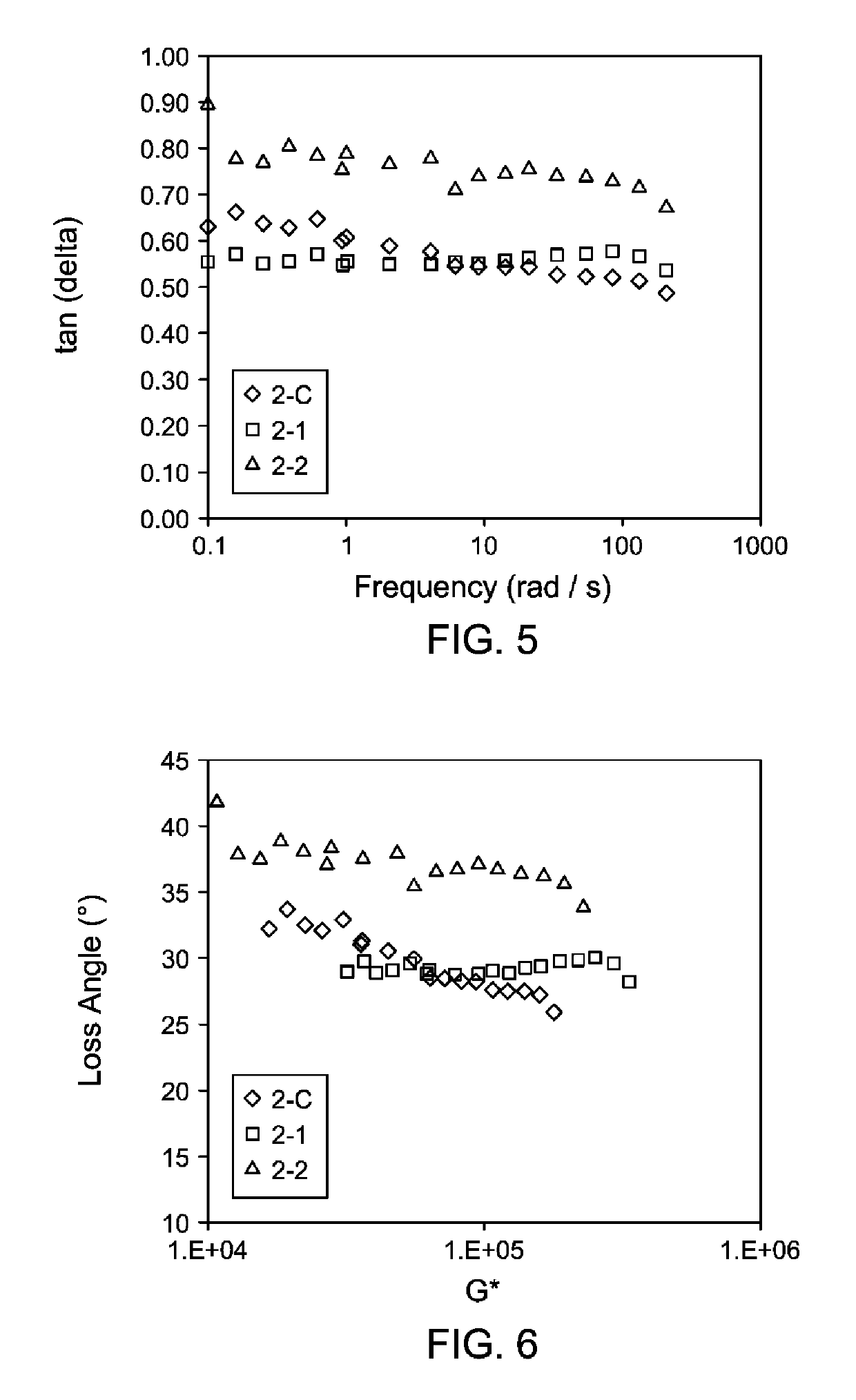Dual Metallocene Catalyst Copolymer Compositions
a metallocene catalyst and copolymer composition technology, applied in the direction of organic compound/hydride/coordination complex catalyst, physical/chemical process catalyst, chemical apparatus and processes, etc., can solve the problems of unintended crosslinking, unsatisfactory crystallinity, and high cost of ziegler-natta processes , to achieve the effect of suitable deploymen
- Summary
- Abstract
- Description
- Claims
- Application Information
AI Technical Summary
Benefits of technology
Problems solved by technology
Method used
Image
Examples
example 1
[0174]Polymerizations were carried out using a solution process in a 1.0-liter continuous stirred-tank reactor (autoclave reactor). The autoclave reactor was equipped with a stirrer, a water-cooling / steam-heating element with a temperature controller, and pressure controller. Isohexane was used as a solvent. It was fed into the reactor using a Pulsa pump and its flow rate was controlled by adjusting the outflow at the pump (using a calibration curve). The compressed, liquefied propylene feed was controlled by a mass flow controller. Ethylene was mixed with propylene before the reactor and fed to the manifold. A mixture of isohexane and tri-n-octylaluminum (TNOAL) and 5-ethylidene-2-norbornene (ENB) was also added to the manifold through a separate line and the combined mixture of monomers and solvent was fed into the reactor using a single tube.
[0175]Catalyst solution included Catalyst A (1,1′-bis(4-triethylsilylphenyl)methylene-(cyclopentadienyl)(2,7-di-tertiary-butyl-fluoren-9-yl)...
example 2
[0183]Polymerizations were carried out in the same manner as described with respect to Example 1. Both catalyst A and Catalyst B were preactivated with activator C in 900 ml of toluene at a molar ratio of about 1:1. The detailed polymerization process conditions and some characteristic properties are listed in Table 3. The scavenger feed rate was adjusted to optimize the catalyst efficiency and the feed rate varied from 0 (no scavenger) to 15 μmol / min. The catalyst feed rates may also be adjusted according to the level of impurities in the system to reach the targeted conversions listed. Corrected ethylene wt % s were calculated (% C2 (uncorr) / (100+% diene)*100), and are reported as indicated below. GPC-IR as previously described was used to determine the molecular weight. A rubber process analyzer was used as previously described to obtain the shear rheology at a temperature of 125° C. and a strain rate of 14% in Table 3 below; ML, MLRA, and cMLRA were calculated as described herei...
example 3
[0187]Representative EPDM compound formulations containing polymer (Sample 2-1, Sample 2-2, or one of the comparative Samples 3-C1, 3-C2 and 3-C3), carbon black, oil and curatives were prepared in a 410 cc Banbury® Mixer. Sample 3-C1 is Vistalon™ 2504; Sample 3-C2 is Vistalon™ 2502, and Sample 3-C3 is Vistalon™ 722. These comparators were selected for the comparisons of compounding data of Example 3 because of the use of a sulfur cure (Sample 2-C, which contains VNB, is not sulfur curable).
[0188]Table 4 shows the representative EPDM formulation. A conventional mix was adopted for compounding using a fill factor of 70%. At the start of the mix, the chamber was filled with polymer. Carbon black, oil, zinc oxide and stearic acid were added gradually to the mixer. After the mix had homogenized, the mixing speed was reduced to 80 rpm to control the temperature. Mixing was continued for 3 minutes, after which the resulting masterbatch was discharged from the Banbury mixer. The temperature...
PUM
| Property | Measurement | Unit |
|---|---|---|
| temperature | aaaaa | aaaaa |
| phase angle | aaaaa | aaaaa |
| molar ratio | aaaaa | aaaaa |
Abstract
Description
Claims
Application Information
 Login to View More
Login to View More - R&D
- Intellectual Property
- Life Sciences
- Materials
- Tech Scout
- Unparalleled Data Quality
- Higher Quality Content
- 60% Fewer Hallucinations
Browse by: Latest US Patents, China's latest patents, Technical Efficacy Thesaurus, Application Domain, Technology Topic, Popular Technical Reports.
© 2025 PatSnap. All rights reserved.Legal|Privacy policy|Modern Slavery Act Transparency Statement|Sitemap|About US| Contact US: help@patsnap.com



